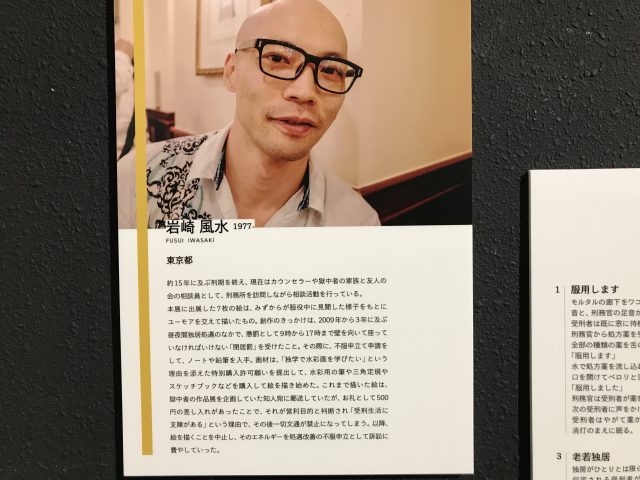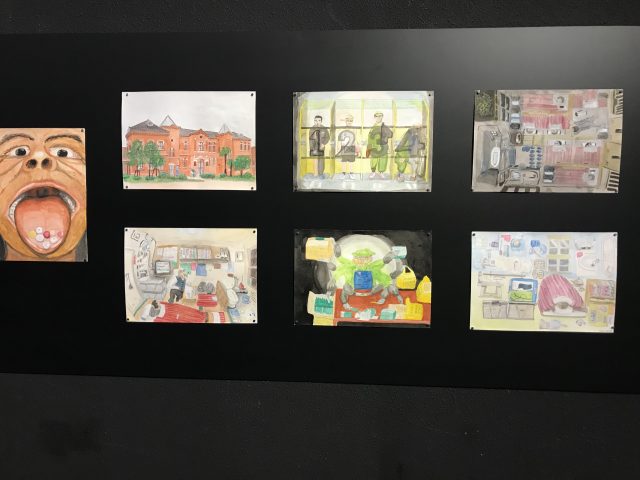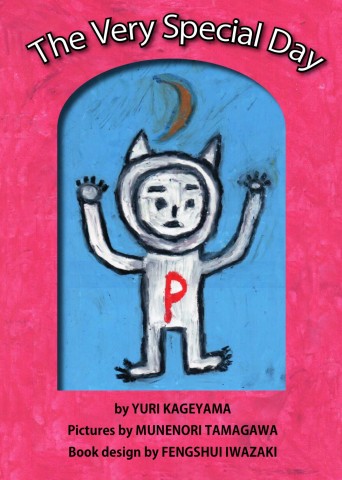
THE VERY SPECIAL DAY is also a film by stop motion artist HAYATTO (August 2019). PLEASE WATCH FOR SCREENINGS.
The trailer:
A birthday is very special for any little boy.
And a little boy is very special for any parent.
This book is an everyday but very special story about the trials and joys of growing up in an imperfect world.
THE VERY SPECIAL DAY by Yuri Kageyama (first published in KONCH, Ishmael Reed Publishing Co., 2013).
A TOKYO FLOWER CHILDREN 2016 publication picture book, with Illustrations by Munenori Tamagawa, Book design by Fengshui Iwazaki.
FOR ORDERS for the book, please go to this artist Munenori Tamagawa’s link , or write to us, using the contact section of this site.
A story about how a defiant young woman tries to make a birthday a very special day for her child all by herself.
A story about how discrimination begins in the home, and how the fight against discrimination also begins in the home.
A story about ice cream at a birthday party and French Fries at the aquarium.
A story about how “they didn’t like us because we were Japanese American, and not Japanese.”
A story about how stars can be that cure-all ideal but no-cost spiritual present.
A story that’s a bit sentimental but honorable and true, written for all the children in the world.
May they stay safe, may they enjoy peace, may they find love and may they know who they really are.
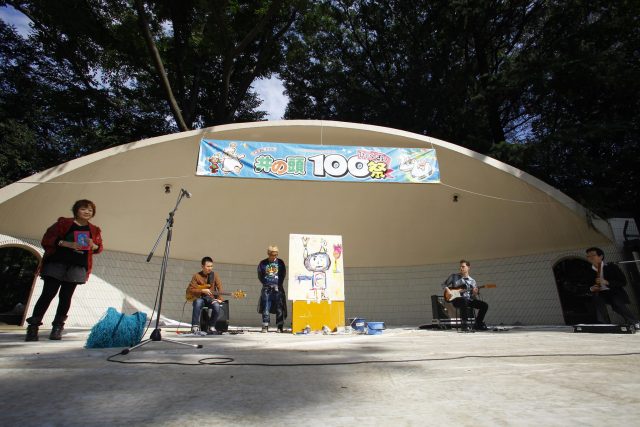
Reading THE VERY SPECIAL DAY at Inokashira Koen Tokyo SUN. Oct. 23, 2016. Photo by Junji Kurokawa.
OUR READING OF THE VERY SPECIAL DAY at Inokashira Koen, Tokyo, SUN Oct. 23, 2016. Featuring Live Painting by Munenori Tamagawa, the illustrator of the book.
Left to Right: Yuri Kageyama (writer and storyteller), Hiroshi Tokieda (bass), Munenori Tamagawa (visual artist), Ryan Carter (guitar) and Kouzan Kikuchi (shakuhachi). PHOTOS by Junji Kurokawa.
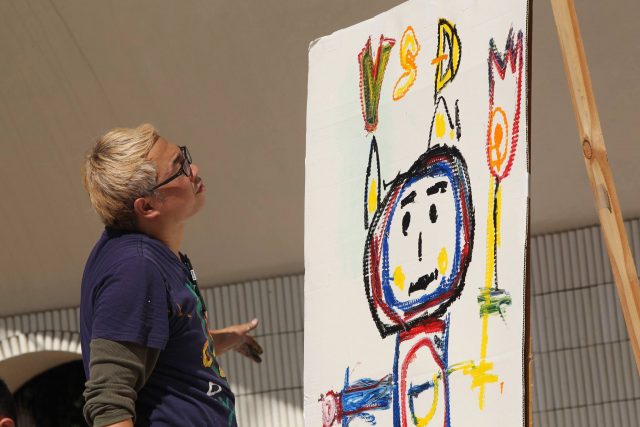
Our Reading of THE VERY SPECIAL DAY at Inokashira Koen SUN Oct. 23, 2016. Photo by Junji Kurokawa.
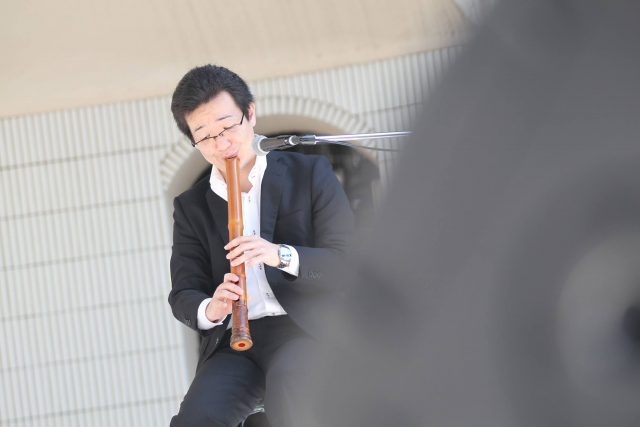
Our Reading of THE VERY SPECIAL DAY at Inokashira Koen SUN Oct. 23, 2016. Photo by Junji Kurokawa.
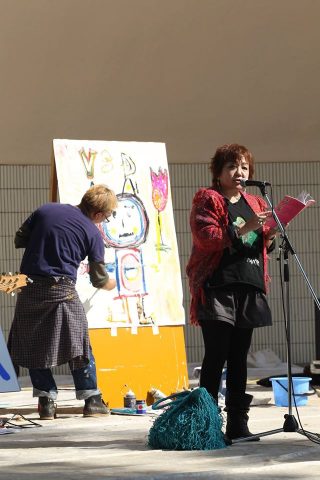
Our Reading of THE VERY SPECIAL DAY at Inokashira Koen SUN Oct. 23, 2016. Photo by Junji Kurokawa.
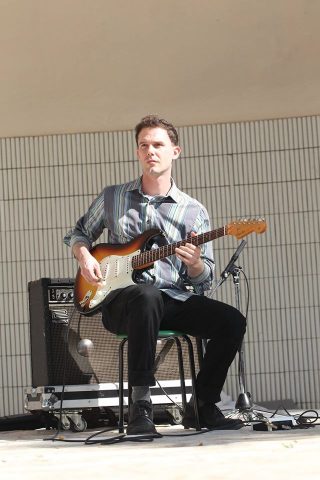
Our Reading of THE VERY SPECIAL DAY at Inokashira Koen SUN Oct. 23, 2016. Photo by Junji Kurokawa.
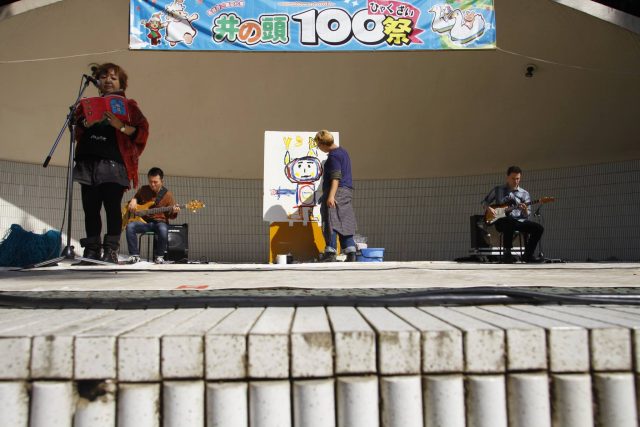
Our Reading of THE VERY SPECIAL DAY at Inokashira Koen SUN Oct. 23, 2016. Photo by Junji Kurokawa.
So I thought about what could be a very special day for Mama, and so I asked her: “Mama, what would you like to do on your funeral?”
Mama stopped moving all of a sudden, and I thought she might even spank me because it was so all of a sudden, though she hardly ever ever ever spanks me.
That was how sudden it was.
Then she went back to normal and said, “I want a lot of beautiful music.”
So I said very quickly to catch up with her suddenness, “Mama, I will play that music. I will.”
_ Excerpt from “The Very Special Day,” a story first published in KONCH: Ishmael Reed Publishing Co. 2013, and a TOKYO FLOWER CHILDREN picture book, published 2016.
More photos from Inokashira Park courtesy park organizers: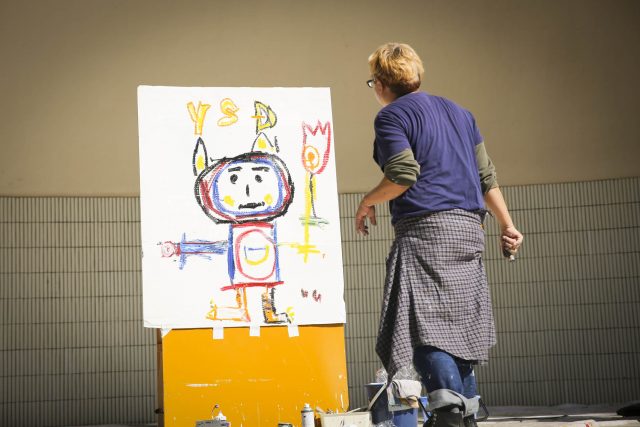
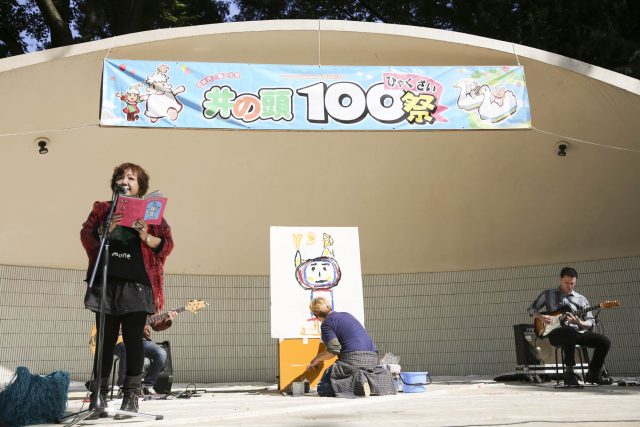
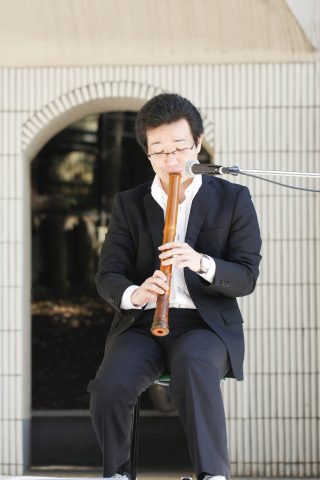
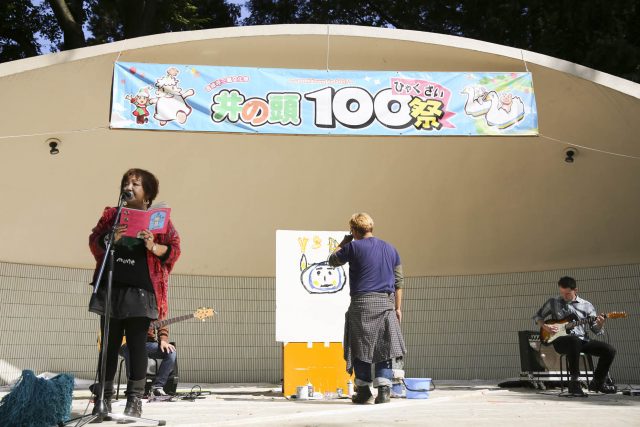
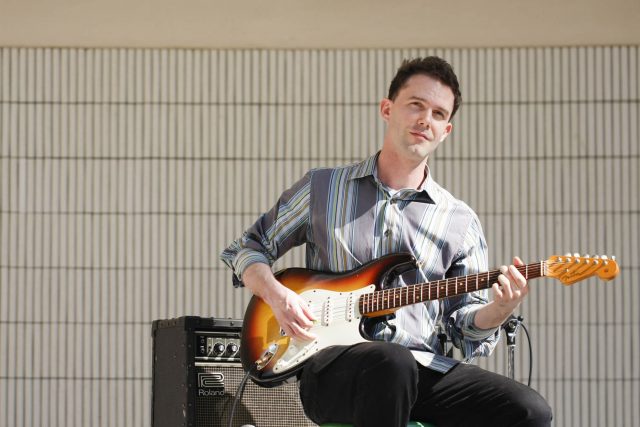
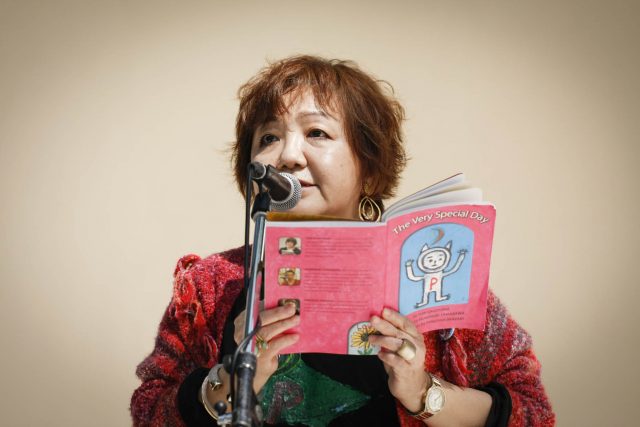
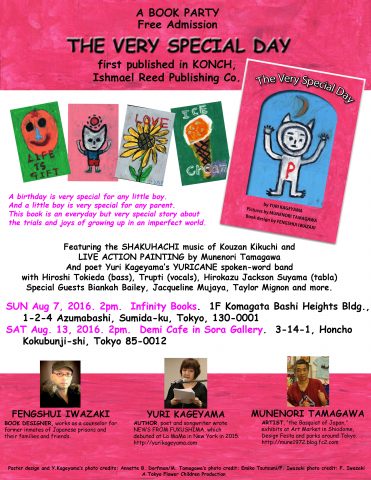
BOOK PARTY free admission
featuring LIVE PAINTING by Munenori Tamagawa and poet Yuri Kageyama’s YURICANE spoken-word band with Kouzan Kikuchi (shakuhachi), Hiroshi Tokieda (bass), Trupti (vocals), Hirokazu Suyama (tabla).
Special Guests Kenwood Dennard, Biankah Bailey, Jacqueline Mujaya , Taylor Mignon and more.
SUN Aug. 7, 2016 2 p.m. Infinity Books. 1F Komagata Bashi Heights Bldg , 1-2-4 Azumabashi, Sumida-ku, Tokyo, 130-0001
SAT Aug. 13, 2016 2 p.m. Demi Cafe in sora Gallery. 3-14-1 Honcho Kokubunji-shi, Tokyo 85-0012
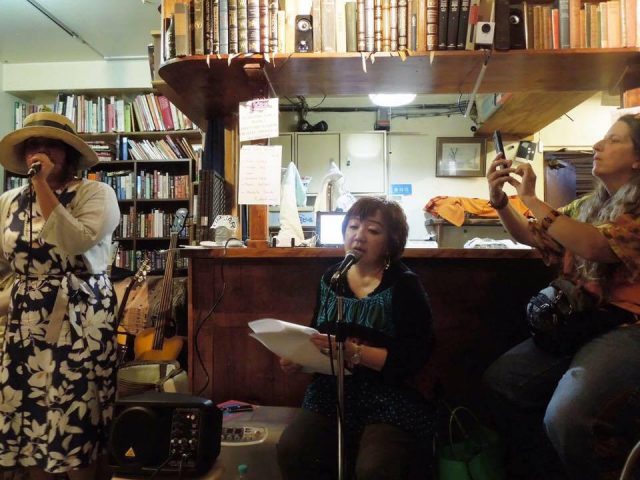
THE VERY SPECIAL DAY book party at Infinity Books in Tokyo SUN Aug. 7, 2016. Photos by Emiko Tokai.
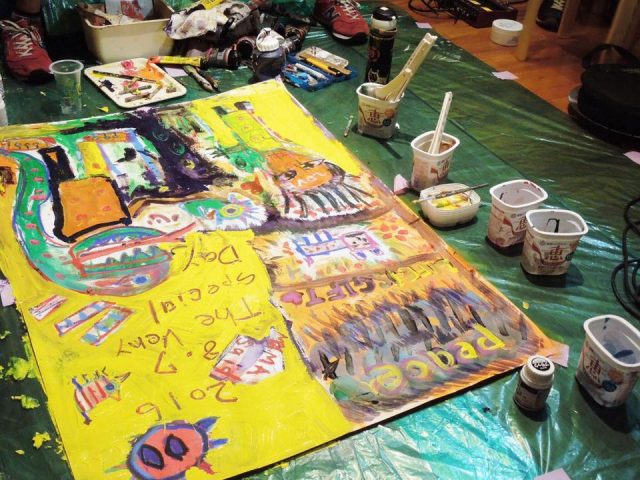
Live Painting with the reading.
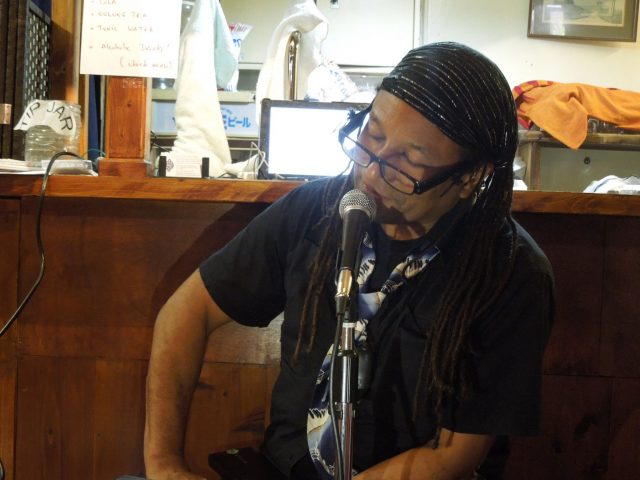
Kenwood Dennard, professor at Berklee College of Music, reads his poetry at THE VERY SPECIAL DAY
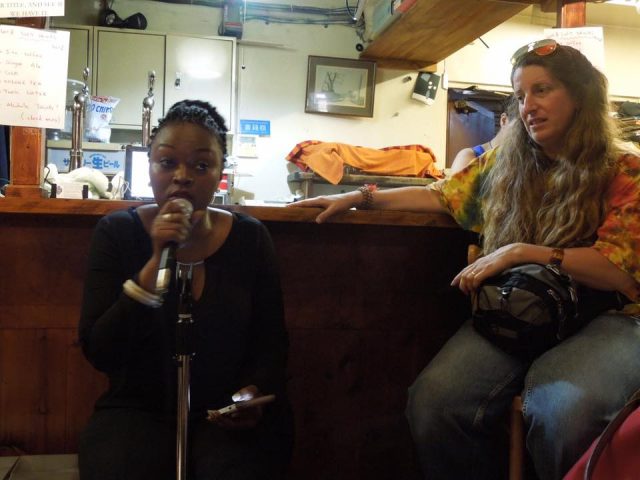
Jackie Mujaya speaks about Tanaganika Kids at THE VERY SPECIAL DAY at Infinity Books in Tokyo. Cherie Willoughby, at right, who also read her poetry.
